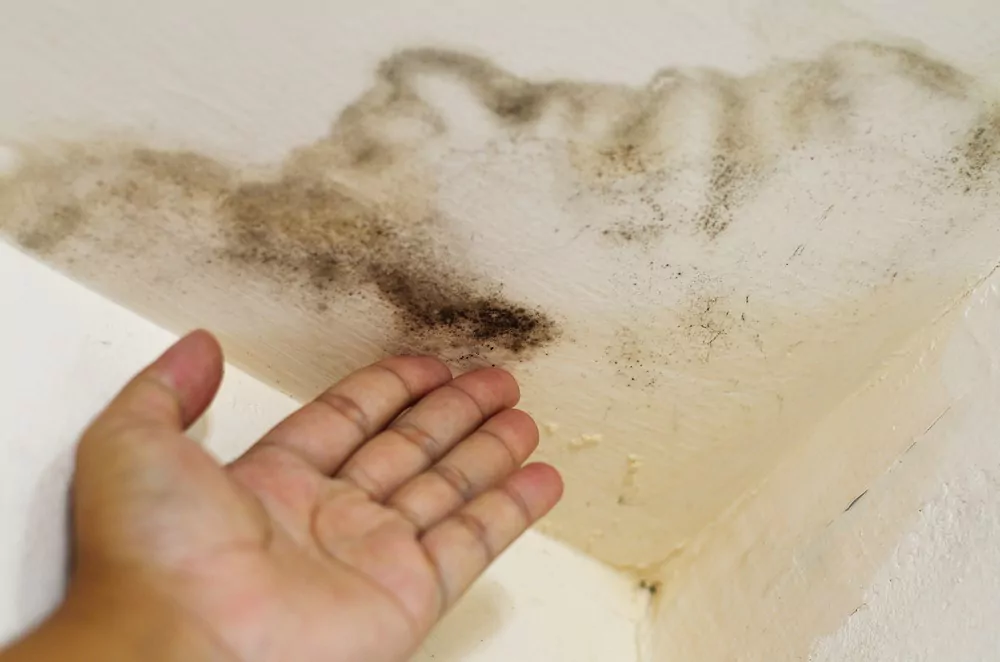Water spot on ceiling under bathroom can be a serious problem. If left untreated, it can lead to mold growth, structural damage, and other problems. In this article, we will discuss the causes of water damage on ceilings under bathrooms, how to identify the source of the leak, and how to fix the damage.

Causes of Water Damage on Ceilings Under Bathrooms
There are a number of things that can cause water damage on ceilings under bathrooms. Some of the most common causes include:
- Leaking pipes: Leaking pipes are one of the most common causes of water damage on ceilings under bathrooms. Leaks can occur in the pipes that supply water to the toilet, sink, or shower. Various factors, including corrosion, wear and tear, or improper installation, can cause leaks.
- Damaged caulking or sealant: Caulking and sealant seal around bathtubs, showers, and other fixtures in bathrooms. If the caulking or sealant becomes damaged, it can allow water to seep through. Caulking and sealant can be damaged by moisture, chemicals, or physical wear and tear.
- Clogged drains: Clogged drains can also cause water damage on ceilings under bathrooms. When drains are clogged, water can back up and overflow, causing damage to the ceiling. Clogs can be caused by hair, soap scum, or other debris.
- Roof leaks: In some cases, water damage on ceilings under bathrooms can be caused by a roof leak. If the roof is damaged, it can allow water to seep into the attic and then drip down onto the ceiling. Roof leaks can be caused by hail, wind, or other weather events.
How to Identify the Source of the Leak
Once you have determined that you have water damage on the ceiling under your bathroom, you need to identify the source of the leak. This can be a difficult task, but there are a few things you can do to help narrow it down.
- Look for any obvious signs of a leak, such as wet spots on the ceiling, dripping water, or mold growth. If you see any of these signs, you can start your investigation there.
- Try to trace the path of the water. If you can see where the water is coming from, you will be well on your way to identifying the source of the leak.
- Turn off the water to the bathroom and see if the leak stops. If the leak stops, you have identified the source of the leak.
- If you are having trouble identifying the source of the leak, you may need to hire a plumber or other professional to help you.
How to Fix Water Damage on Ceilings Under Bathrooms
Once you have identified the source of the leak, you can start to fix the damage. The specific steps you will need to take will vary depending on the cause of the leak.
Stop the leak: The first step is to stop the leak. This may involve repairing a leaking pipe, replacing damaged caulking or sealant, or clearing a clogged drain.
Clean up the damage: After stopping the leak, you must clean up any existing damage. This may involve removing wet drywall, scraping mold, or repairing structural damage.
Prevent future leaks: After repairing the damage, you should take measures to prevent future leaks. This may require you to replace old or damaged pipes, caulk or seal around fixtures, or repair your roof.
Tips for Fixing Water Damage on Ceilings Under Bathrooms
- Be patient: Fixing water damage can be a time-consuming process. Do not rush the job, or you may end up making the problem worse.
- Use the right materials: Make sure you use the right materials to fix the damage. Using the wrong materials can lead to further problems.
- Get professional help: If you are not comfortable fixing the damage yourself, hire a professional.
Read too: Do All Popcorn Ceilings Contain Asbestos
Additional Information
In addition to the steps listed above, there are a few additional things you can do to help prevent water spot on ceiling under bathroom.
- Install a moisture sensor: A moisture sensor can help you detect leaks early on, before they cause significant damage.
- Install a water alarm: A water alarm can sound an alarm if water is detected.
- Install a sump pump: A sump pump can help to remove water from your basement or crawl space, which can help to prevent leaks from occurring in your bathroom.